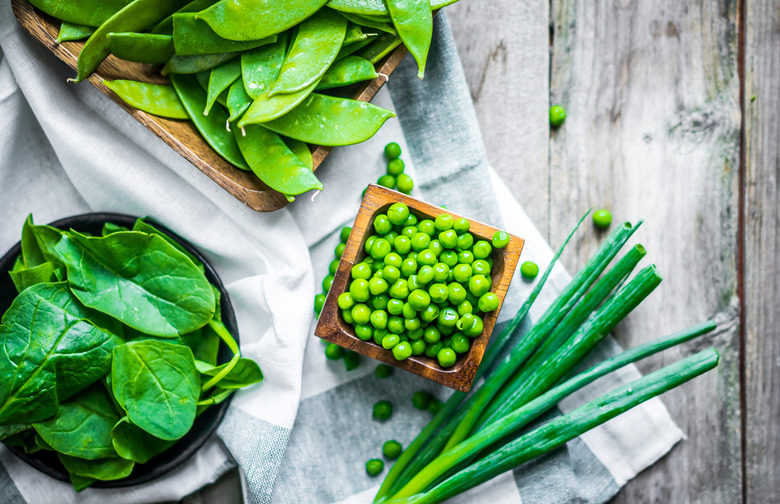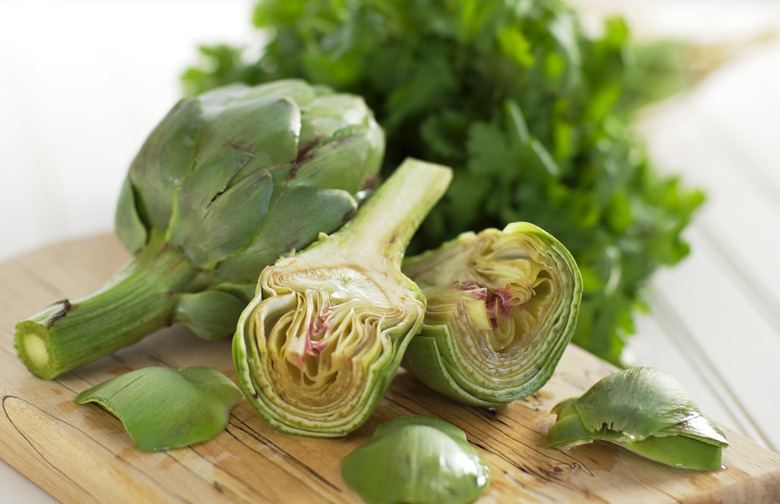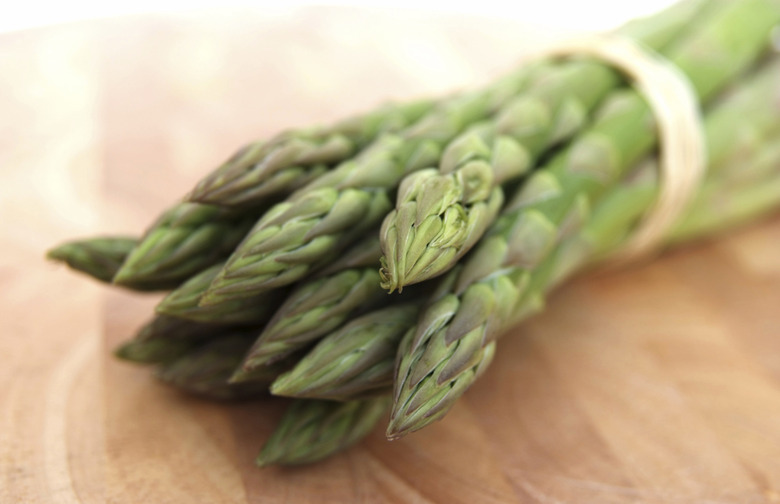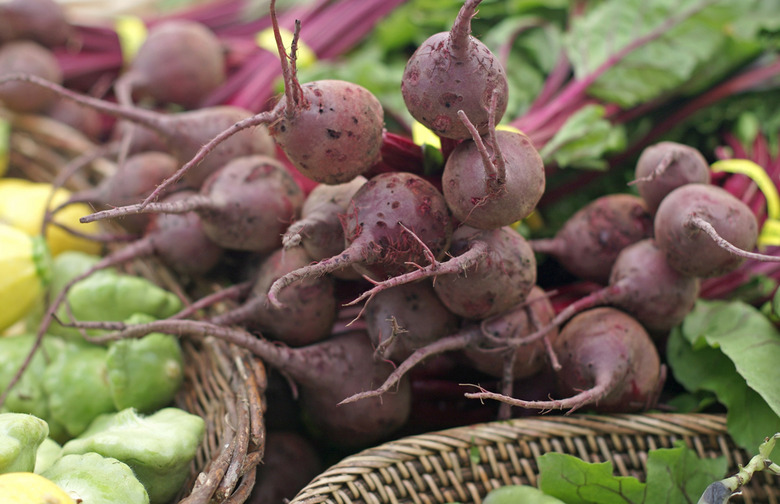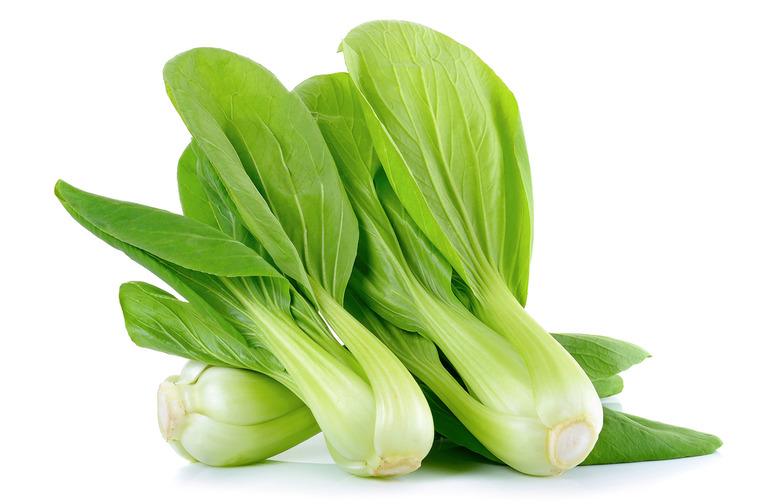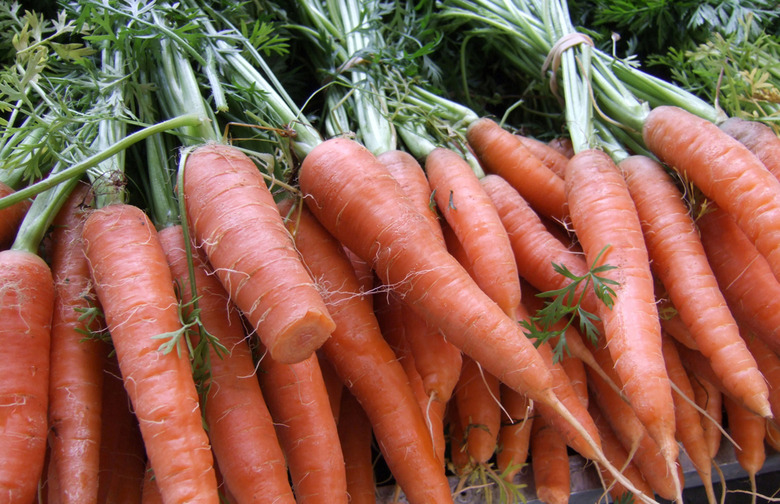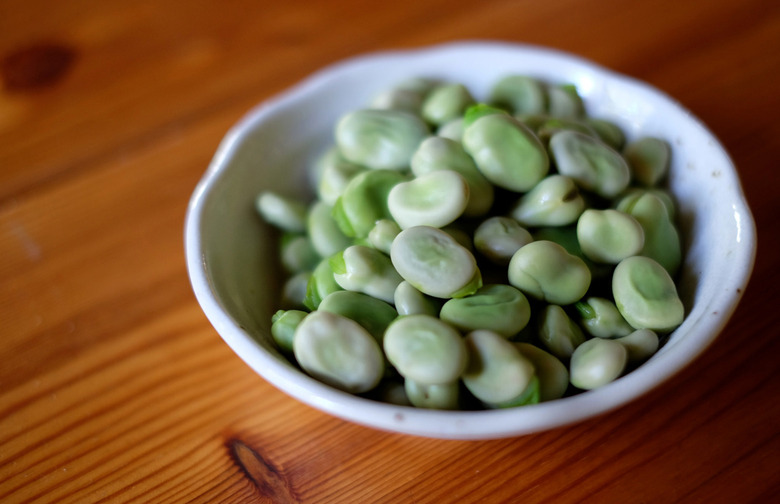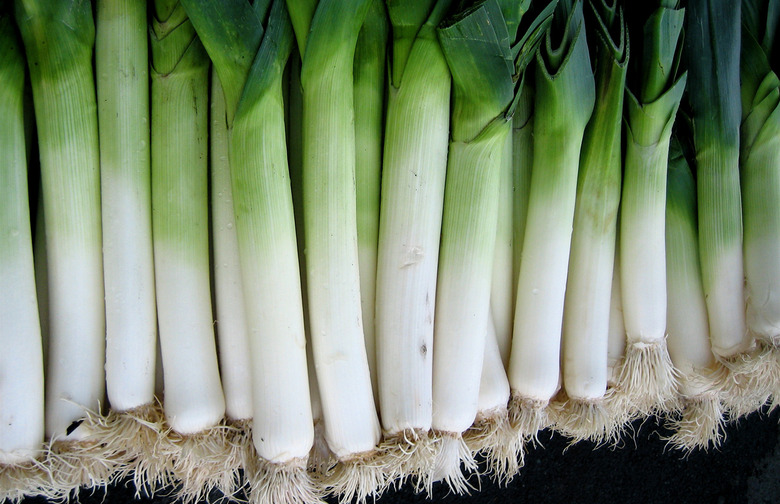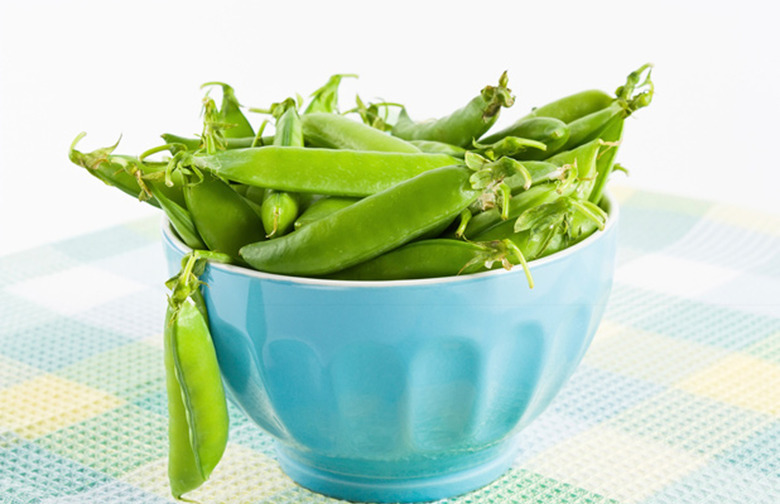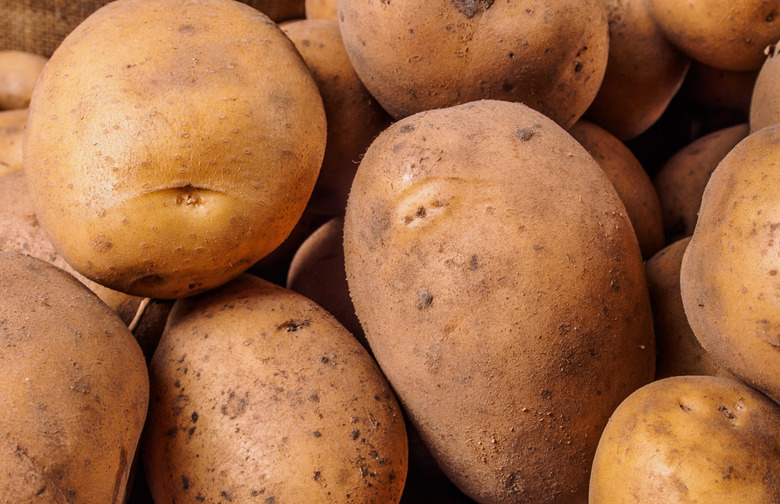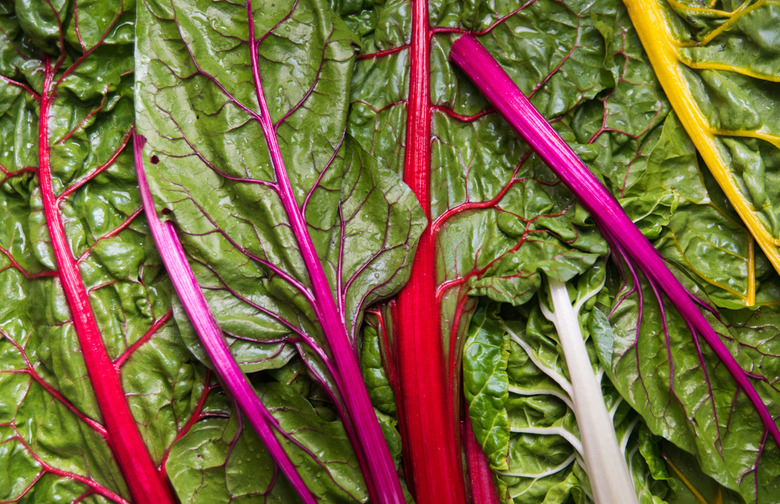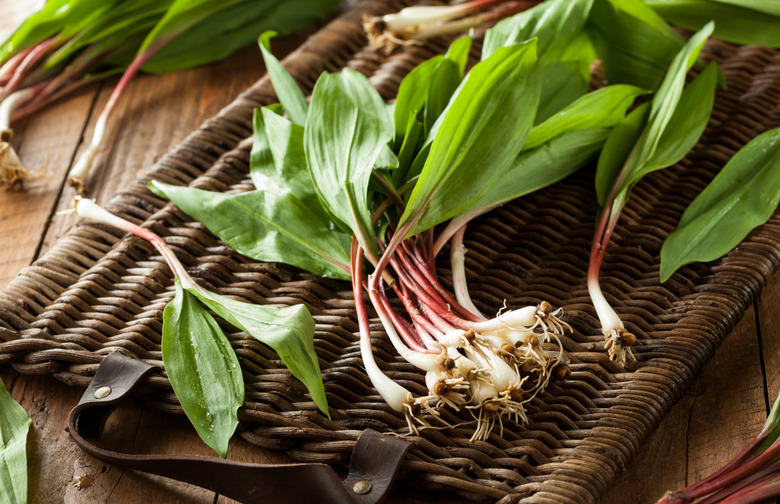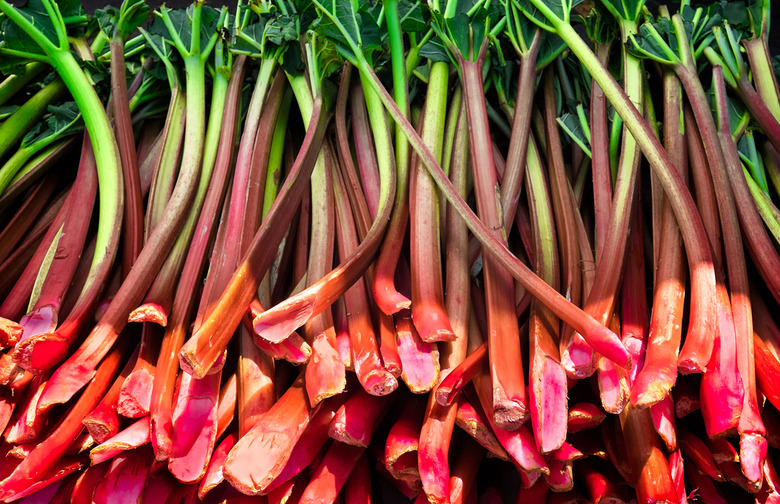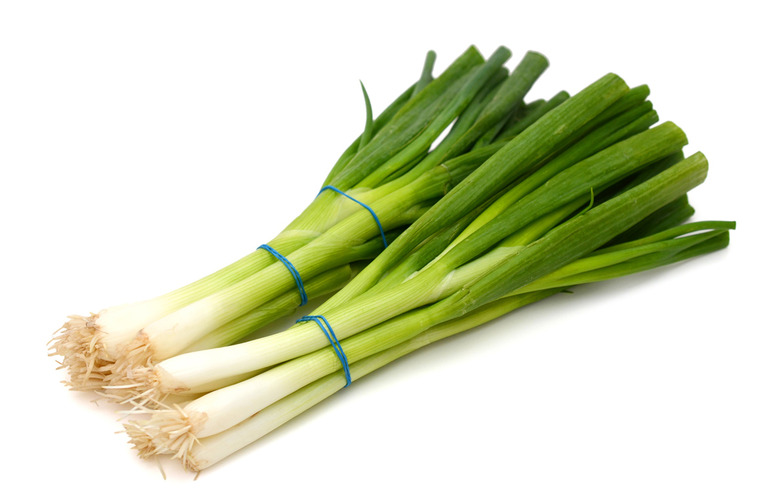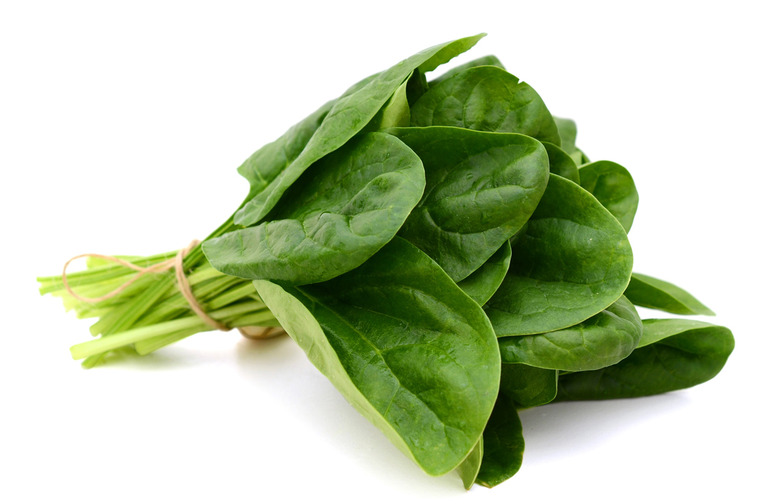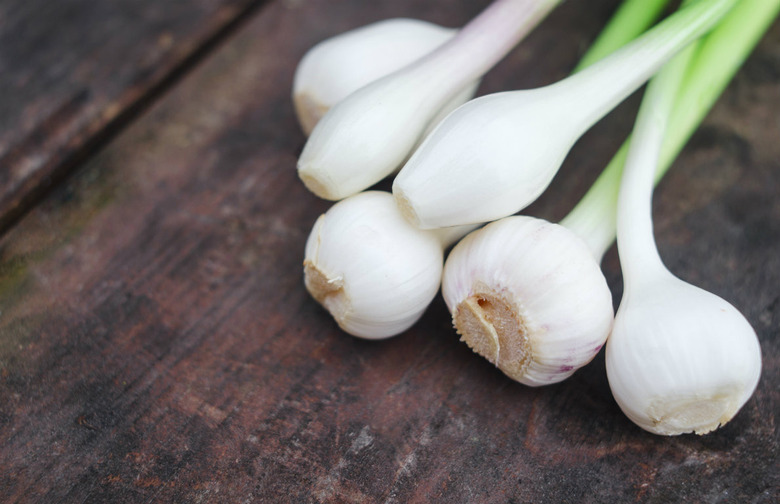Rainbow Chard, Fava Beans, Artichokes, And More: The Definitive Guide To Spring Produce
It's is time to say goodbye to winter squash, citrus, and Brussels sprouts. While we welcomed roasted Brussels and warming squash soups at the start of winter, these offerings have begun to ring a little repetitive. Thankfully, spring produce is bursting from the ground and off the trees to brighten our plates and palates with seasonal offerings like pungent ramps, verdant greens, and sweet peas.
These new textures and colors are sure to inspire you in the kitchen, so pack away winter's preserved, canned goods for another time, and head to the farmers market with your baskets ready to accept colorful vegetables, tender leaves, and the spring harvest's sweet fruit.
Consider fresh, nutrient-packed seasonal foods to help you combat springtime allergies, clean up your diet, and to support your local farmers.
To help you along your way this spring, we've rounded up some of our favorite spring produces along with inspiring recipes, cooking advice, and helpful shopping tips so you can be sure to bring home only the best quality spring produce available.
Artichokes
This might sound a little strange, but to test for the best artichoke, give them a squeeze. If you hear a squeak, then you know you've found a ripe one. Artichokes are great for your cholesterol, they're also high in fiber and potassium. You can steam your artichoke whole and nosh on the leaves, or use just the hearts for dishes, like deep-fried artichoke hearts, sautéed in pasta, or blended into an artichoke dip.
Arugula
Peppery arugula is a welcomed sight after a long winter of kale, kale, and more kale. The warmer weather will make your dark green kale turn bitter, but tender arugula is the perfect substitute. Look for bright green leaves, yellowing is a sign that your arugula is a little past its prime. Serve in a simple salad, packed into a panini, or sautéed with your favorite pasta toss.
Asparagus
Asparagus really are a versatile vegetable — grilled, steamed, sautéed, fried, and even raw — asparagus add color, texture, and a mild flavor to your plate. Look for bright green spears — violet-tinged spears are OK too — and just like artichokes, when the bunch is squeezed you should hear a squeak.
Beets
Red, yellow, or orange, beets add sweetness to dishes and pair well with bright, citrusy vinaigrettes. Look for small to medium-sized, unblemished beets with a firm, smooth skin. Beet greens are also a wonderful indicator of your beets freshness. The foliage can be sautéed and served with a squeeze of lemon juice.
Bok Choy
Popular in Chinese cookery, bok choy comes into season during the spring. Look for pale stalks that fade into light green at the leaves. Simply served steamed, stir-fried, or sautéed, bok choy adds lots of crunchy texture to your dish.
Carrots
Young spring carrots are tender and sweeter than during the winter. Save the green fronds for pesto or a cold carrot-top soup. Nosh on crunchy carrots for a healthy snack, roast them as a side dish for dinner, or slice them into thin ribbons and serve raw in salad.
Fava Beans
Fresh fava beans are only available during the spring. Peel back the tender pods to reveal the large, green beans. They should be bright green with a firm texture. Popular in Middle Eastern and Mediterranean cooking, fava beans have a mild nutty flavor.
Leeks
Spring leeks have a mild onion flavor. Look for firm, bright green stalks. Leeks are at peak flavor from March to April, so stock up on this delicious spring vegetable for flavoring soups, adding to stir-fries, and reinforcing stocks.
Peas
If your only experience with peas starts with a can opener, forget everything you've tasted before. Fresh spring peas are sweet with a snappy texture — they're anything but mushy. Serve fresh in salads, sautéed for a side dish, or cold in chilled spring soup.
Potatoes
Potatoes are one of those vegetables we see year round, but early spring and summer yields "new potatoes:" basically any potato harvested early in the season. They tend to be waxier and higher in moisture than baking potatoes, so you can cook these thin-skinned potatoes with that nutritious skin. Look for potatoes that are firm and blemish-free.
Radishes
Winter radishes, like daikon, watermelon, and black radishes, may be gone for now, but their smaller, brightly colored relatives, like white hailstone, purple plum, and cherry belle, are here to add a spicy zing to salads, enjoyed raw with a sprinkling of za'tar or roasted as a side dish with dinner.
Rainbow Chard
Colorful, spring chard is milder and tender enough to be eaten raw in salads. Look for healthy dark green leaves and brightly colored stalk.
Ramps
A spring forager's favorite. Ramps are a kind of wild leek that has a mild onion flavor. The aesthetics of the ramp, fading from white to red to green, make for a beautiful addition to any plate. Pickle, fry, or pulverize into a pesto. Ramps are the perfect combination of pungent garlic and onion for springtime dining.
Rhubarb
Only the stalk of the rhubarb plant is edible, and it resembles a red celery stalk, but the texture is much more velvety, and the flavor is lip-puckeringly tart. More often baked into pies or cooked down for syrup than used for savory preparations, rhubarb is also delicious when lightly seasoned and braised. Look for bright, glossy, firm stalks. The deeper red it is, the sweeter the rhubarb.
Scallions
Often confused with spring onions, which have a small onion bulb, scallions are picked before the onion bulb begins to form or are grown from non-bulb forming onion varieties. They tend to be milder and sweeter in flavor. Both the whites and the greens are edible and can be eaten raw or cooked. Look for firm stems and bright color.
Spinach
Spinach is the most delicate and tender during the spring. Bright green leaves packed with iron and calcium makes them a healthy choice for your spring salad mix. The greens themselves have a mild sweetness to them, balanced with just a hint of acidity. Look for crisp, dark green leaves that haven't been crushed.
Spring Garlic
Young, green, or spring garlic is sweeter and milder in flavor than pungent, matured garlic. Simply grill it with salt and pepper, roast in olive oil, purée for dips with fresh spring beans, and more. Look for brightly colored, firm stalks.
